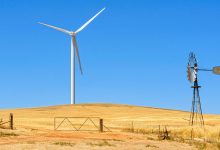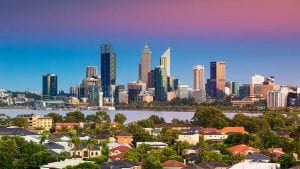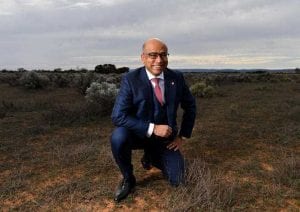Daily price ramp on Australia’s wholesale electricity markets is quite strong in most states right now, and particularly in South Australia and Queensland. The evening peak price ramp is about $100/MWh difference between low and high price, but the duration of low and high price is short.
Despite exports to NSW, coal in Qld is ramping up and down about 1000 MW twice a day. However, it’s the gas-driven QLD early evening peak that really moves prices. In South Australia in July, there were mostly exports even in the early evening peak. Those exports to Victoria required more high price marginal gas to enter the system.
Even in winter the aggregate influence of rooftop and utility solar is very noticeable and a vast transformation from a few years ago. In South Australia at the moment wind and solar are well over 50% of generation driving prices on average below Victoria.
Victoria’s average price for July is about $11/MWh higher than either South Australia or NSW and $20 MWh above Qld, basically because its midday price in July was around $70 MWh, compared to say $40 MWh in the solar richer States.

In front of the meter consumption hasn’t moved in nearly 6 years
The five year total average in the NEM in front of the meter is around 193 TWh as measured by metered demand using NEM Review as a source. Although it looks like 2019 is soft in Autumn and Winter, due to the hot start to the year , the 2019 year to date average is right in line with the five year number.

The annualized level of the last 30 days is around 193 TWh which is in line with the full year average. So when we look at what’s happening to price we are in effect seeing price at the average level of demand. Following so far?
Solar output is depressed in Winter (it’s about 5% of total demand including behind the meter now, versus a peak in the March quarter of over 8%).
Despite all that we are seeing some strong price ramps up and down in the daily average numbers. Two interesting cases are solar-strong Qld and wind-strong South Australia.

It seems self evident the spike in QLD when the Sun goes down and demand goes up and also the depressed price at lunch time. Looking at the supply and demand side what we see is that when the solar comes into action QLD exports and turns down its gas and coal. In the evening peak this is reversed although on average there are still some exports.
What’s most interesting to me is that even in Winter we are seeing coal ramping up and down 1000 MW pretty much twice a day in QLD. Coal has always had to be flexible because demand is itself volatile, but the ramping is already becoming stronger.
I don’t know how efficient it is to have the coal generators doing that morning ramp for just 2-3 hours but clearly they can still outcompete gas in that time frame.
I expect, based on the new Mt Emerald wind farm, that as the Coopers Creek wind farm gets into action it may start to eat into that morning peak. Note demand includes behind the meter and solar is combined utility and behind the meter.

Also it’s interesting to look at the daily average wind pattern in Qld from Mt Emerald. Unlike the other charts this is a 9 month average and there may well be seasonal factors I haven’t looked at. Assuming its representative of Qld in total though its quite encouraging.
The wind output drops off in the middle of the day and picks up again when the Sun goes down. Wind won’t quite pick up the early Qld peak but it will assist with the latter part. Again we look for more data over time and more wind farms to see if these early results can be replicated.
See also When the wind doesn’t blow here, maybe it’s blowing over there.

Enthusiasts might recall that one of the several far sighted principles underlying the German Energiewende that kicked off the whole globabl energy transformation was that wind and solar were complementary to each other.
This is also supportive of the hybrid wind and solar farm pioneered by Windlab for Qld and now proposed by for instance by Goldwind at the Clarke Creek wind and solar farm and shortlisted by Cleanco in the recent tender for 400MW.
South Australia
In wind heavy South Australia price is softest early in the morning and the solar induced middle of the day reaction is less, probably because thermal supply in Victoria is constrained.

As with Queensland, South Australia is exporting most of the time right now. In this case though its exporting wind to Victoria, just not enough to reduce Victorian prices down to the level of other States.
Wind is 50% of supply in July 2019. On average wind has a remarkably steady hourly output in South Australia during the seasonally windy July. Most of the gas ramp is driven by solar.

It looks like peak prices in the South Australian evening would be lower except for the export opportunity. The extra 250 MW of gas in the evening peak over the the morning peak requires a higher price but mostly wouldn’t be needed save for exports.
Both QLD and South Australia exhibit about $100 MWh afternoon ramp move low to high but the duration of the low price and the high price is small suggesting it wouldn’t take much to arbitrage out both the low and the high.
Again this is only one month so we don’t want to overstate the conclusions.










